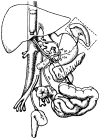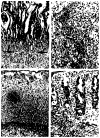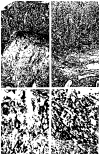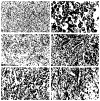Multivisceral intestinal transplantation: surgical pathology
- PMID: 2557597
- PMCID: PMC2972733
- DOI: 10.3109/15513818909022372
Multivisceral intestinal transplantation: surgical pathology
Abstract
We report the diagnostic surgical pathology of two children who underwent multivisceral abdominal transplantation and survived for 1 month and 6 months. There is little relevant literature, and diagnostic criteria for the various clinical possibilities are not established; this is made more complicated by the simultaneous occurrence of more than one process. We based our interpretations on conventional histology, augmented with immunohistology, including HLA staining that distinguished graft from host cells in situ. In some instances functional analysis of T cells propagated from the same biopsies was available and was used to corroborate morphological interpretations. A wide spectrum of changes was encountered. Graft-versus-host disease, a prime concern before surgery, was not seen. Rejection was severe in 1 patient, not present in the other, and both had evidence of lymphoproliferative disease, which was related to Epstein-Barr virus. Bacterial translocation through the gut wall was also a feature in both children. This paper documents and illustrates the various diagnostic possibilities.
Figures










References
-
- Williams JS, Sankary HN, Foster PF, Lowe J, Goldman GM. Splanchnic transplantation: An approach to the infant dependent on parenteral nutrition who develops irreversible liver disease. JAMA. 1989;261:1458–62. - PubMed
-
- Goulet OJ, Révillon Y, Cerf-Bensussan N, et al. Small intestinal transplantation in a child using cyclosporine. Transpl Proc. 1988;20:288–96. - PubMed
-
- Cutz E, Rhoads JM, Drumm B, Sherman PM, Durie PR, Forstner GG. Microvillus inclusion disease: An inherited defect of brush border assembly and differentiation. N Engl J Med. 1989;320:646–51. - PubMed
Publication types
MeSH terms
Substances
Grants and funding
LinkOut - more resources
Full Text Sources
Medical
Research Materials
